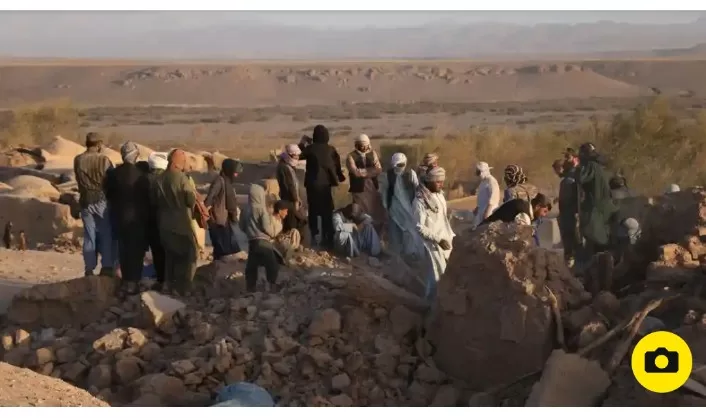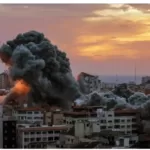In a tragic turn of events, western Afghanistan has been struck by a series of powerful earthquakes, resulting in a sharp rise in the death toll. According to a spokesperson for the Taliban, the number of lives lost has exceeded 1,000, with some reports suggesting the toll could be close to 2,000.
The seismic activity commenced with a magnitude 6.3 earthquake on Saturday, followed by eight significant aftershocks. These tremors rocked remote regions situated approximately 30 kilometers (19 miles) from Herat, the provincial capital. The aftermath of this catastrophic event has seen the complete destruction of rural homes and sent urban dwellers into a state of panic, fleeing to the streets.
As night descended on Sarboland village in the Zinda Jan district, a scene of desolation unfolded. An AFP reporter witnessed the aftermath, with dozens of homes reduced to rubble near the epicenter of the quakes, which rattled the area for more than five harrowing hours.
Men tirelessly sifted through heaps of shattered masonry, while women and children sought refuge in the open, their devastated homes displaying personal belongings fluttering in the unforgiving wind.
The World Health Organization (WHO) has reported that more than 600 houses have been either entirely destroyed or partially damaged across at least 12 villages in Herat province, affecting approximately 4,200 individuals.
Bashir Ahmad, a 42-year-old resident, recounted the immediate aftermath, saying, “In the very first shake, all the houses collapsed. Those who were inside the houses were buried. There are families we have heard no news from.”
Nek Mohammad, a 32-year-old survivor, revealed the grim reality: “We came home and saw that actually there was nothing left. Everything had turned to sand.” He added that approximately 30 bodies had been recovered, and the survivors were left without essentials as nightfall encroached.
The WHO issued a statement on Saturday, stating, “The number of casualties is expected to rise as search and rescue operations are ongoing.”
While casualties within Herat city have been relatively limited, the earthquake has struck a nation already grappling with a dire humanitarian crisis, compounded by the withdrawal of foreign aid following the Taliban’s resurgence in 2021. Herat province, home to nearly 1.9 million people, stands on the border with Iran and has been plagued by a prolonged drought that has further exacerbated the challenges faced by already struggling agricultural communities.
Afghanistan has long been susceptible to seismic activity, particularly in the Hindu Kush mountain range, located at the convergence of the Eurasian and Indian tectonic plates. Just last year, in June, a 5.9-magnitude earthquake wreaked havoc in Paktika province, claiming the lives of more than 1,000 people and leaving tens of thousands homeless. It was the deadliest earthquake in Afghanistan in nearly a quarter of a century.
As the nation grapples with this latest catastrophe, the path to recovery appears daunting, and international assistance will likely be crucial in aiding the affected communities on their long road to healing.






